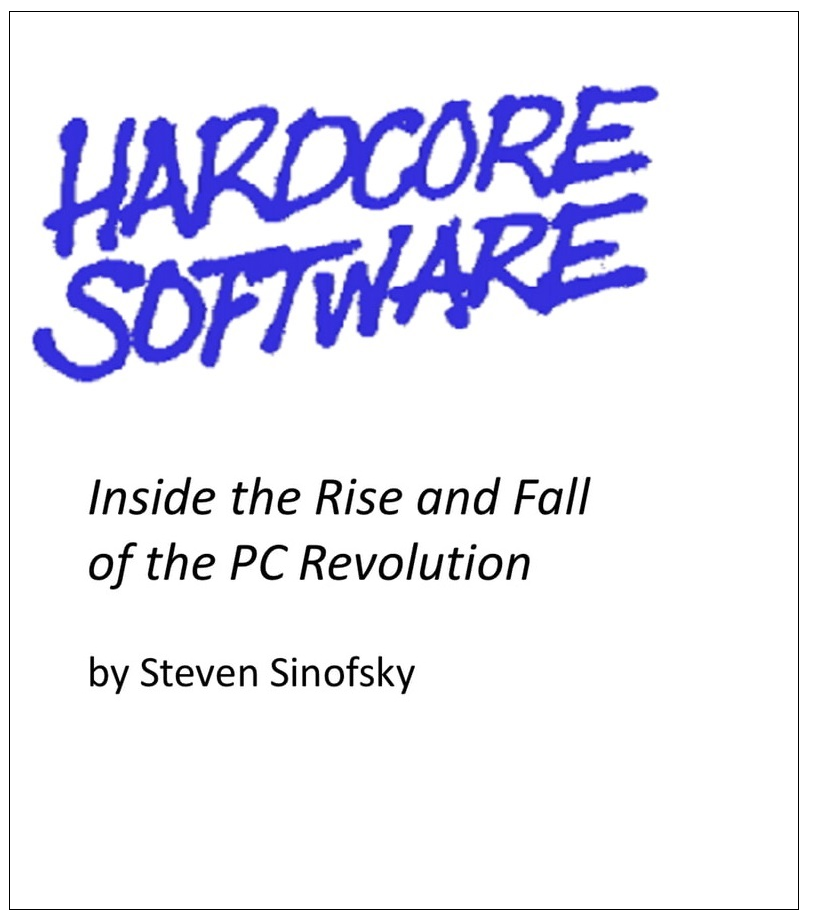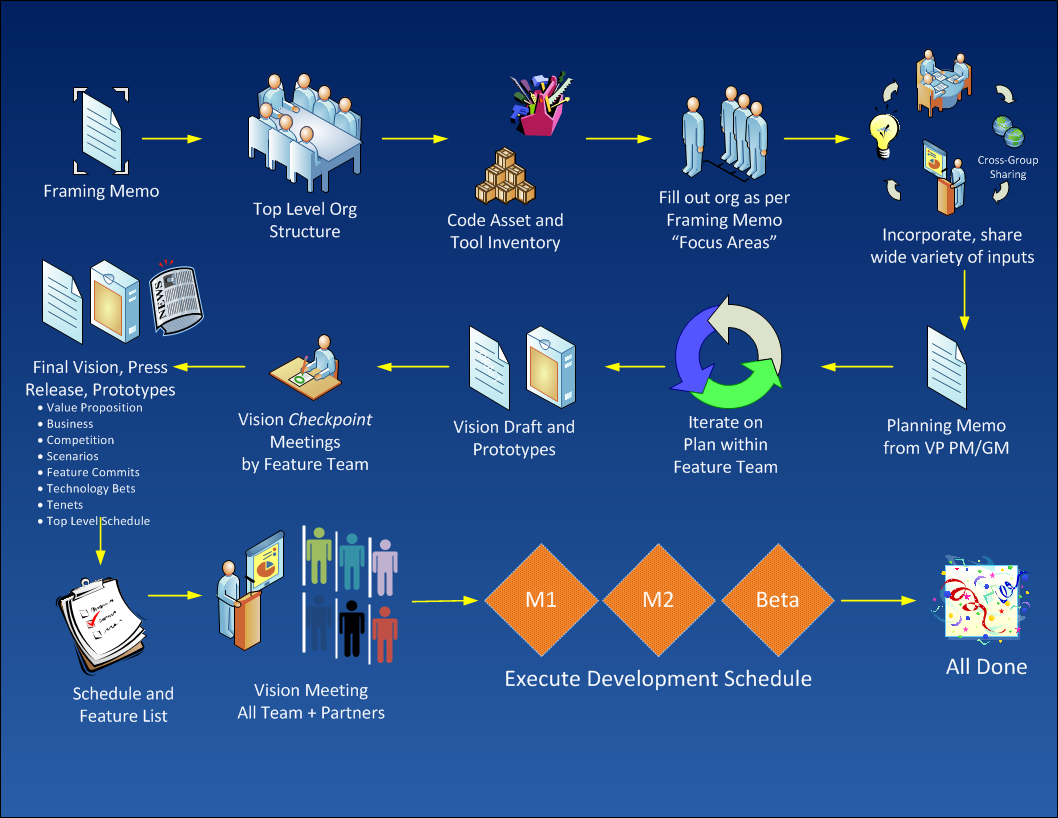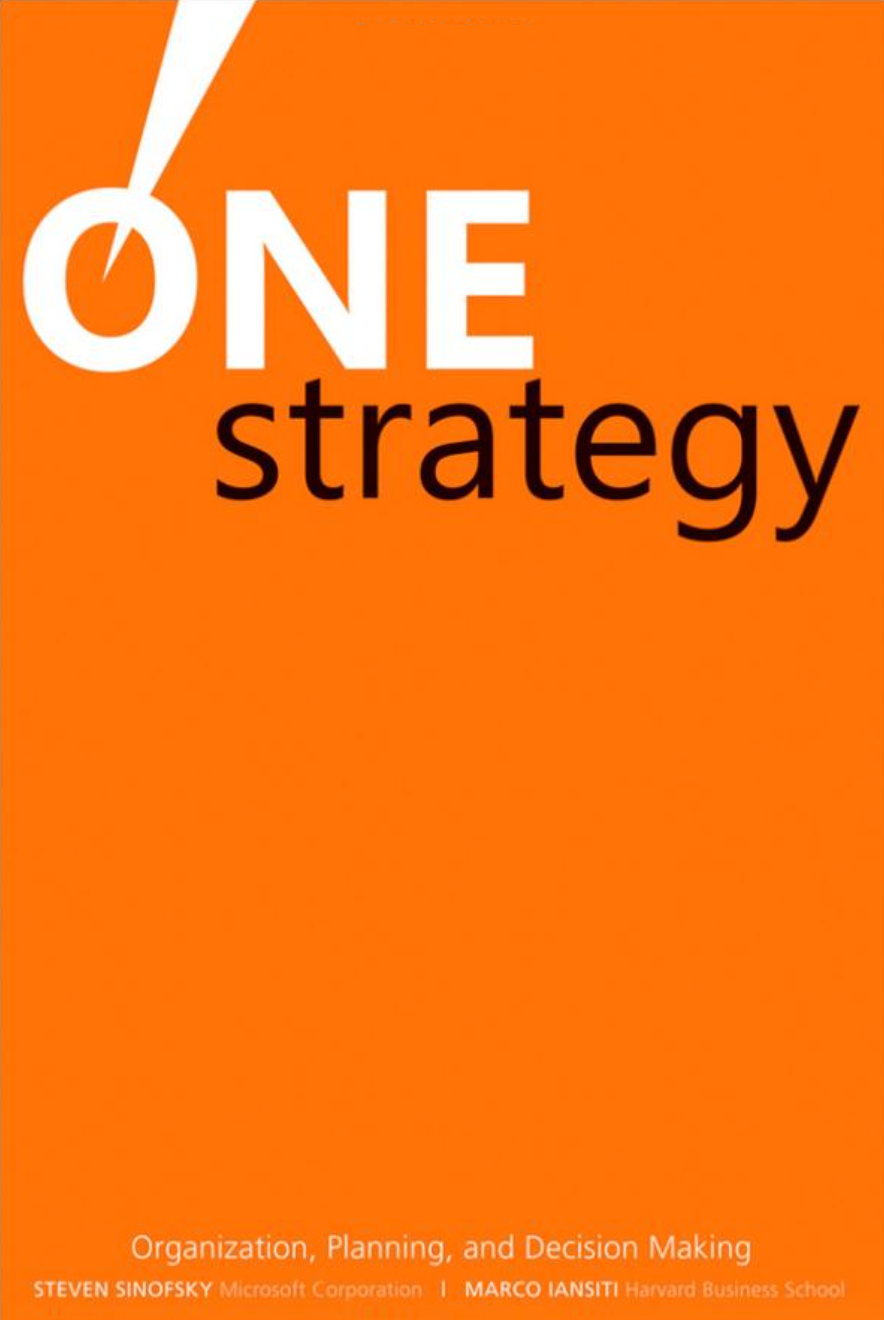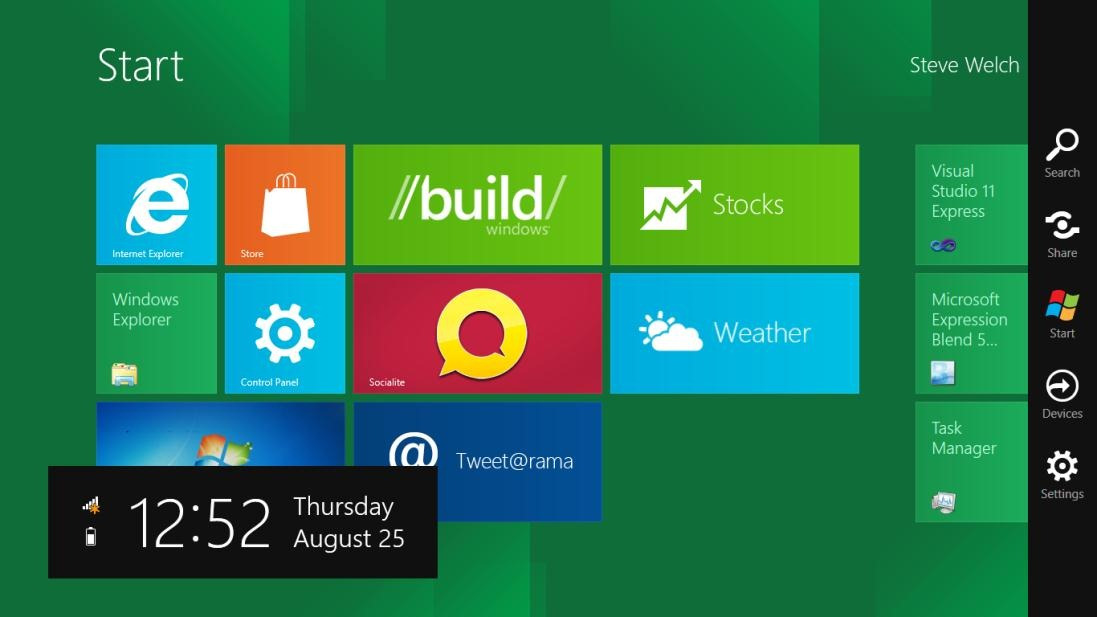Hardcore Software: Inside the Rise and Fall of the PC Revolution is my most recent effort (2021).
Hardcore Software is a non-fiction account of the rise and fall of the PC revolution serialized on Substack, one section at a time, once or twice a week.
Through this first person account of my time at Microsoft, I aim to convey to you an insider’s story of growing influence and corporate obstacles, the evolution of the technology that changed the world, and most of all the people that made it happen. The story weaves its way through the early days of retail software, to scaling an enterprise capable company, and decades of innovation-hampering speedbumps, strategic choices and missteps, all while chronicling Microsoft’s efforts to manage through the largest antitrust action of a generation and waves of crippling global software viruses and software quality woes, all while transforming the company through the emergence of the internet, and navigating diverging cultures within.
Subscribe and receive each section as it is published. Along with the content, subscribers can also join in the community for discussions and frequent ask-me-anything sessions.
Learning by Shipping on Medium (2013-current) is current long form site. Here I have many posts on topics ranging from management to growing and scaling startups. Recently I have been using this site to expand upon twitter threads (aka tweetstorms). I archive threads here and add more commentary, examples, and color beyond what is easy to do on twitter.
Some of the more popular posts/topics you can find here include:
- Functional versus Unit Organizations
- Apple’s Relentless Strategy, Execution, and Point of View
- What Is Your ‘High-Order Bit’?
- The App Store Debate: A Story of Ecosystems | by Steven Sinofsky
- Putting Masks In the Context of Evolution of Personal Healthcare
- My Tablet Has Stickers
- The 10th Anniversary of the iPad: A Perspective from the Windows Team
- “Bicycle for the Mind”
- Amazon: Retailers Gonna Retail
One Strategy: Organization, Planning, and Decision Making (Wiley, 2009). In 2006 I took over managing the Windows team at Microsoft. The team had just come off of a very challenging release called Windows Vista and my responsibility was, for lack of a better phrase, to get things back on track. Over the next 30 months or so the team did amazing work and released Windows 7.
One Strategy challenges traditional views of strategy and operational execution―views that say strategy comes from a small group of select people or that an innovative strategy can only emerge from a distinct organizational spinoff. Aligning a complex organization around one strategy requires all members of a team to participate―learning, sharing, communicating, and contributing to the team's success. One Strategy provides a unique combination of real-world experience managing a large-scale organization with academic research in strategy and innovation to describe what it takes to align an organization around one strategy, manage its execution, and reach for "strategic integrity." One Strategy describes how to drive innovation by connecting the potential of strategic opportunities to the impact of operational execution.
The book is a collection of dozens of blog posts I wrote internally for the team detailing the transformation and approach to building a massive scale software project like Windows. The book is co-authored with Marco Iansiti, the David R. Sarnoff Professor of Business Administration and codirector of the Laboratory for Information Science and of the Digital Initiative, all at Harvard Business School; he is also founder of Keystone Strategy. Marco puts the posts in greater context and draws examples from his research that help to generalize the posts and provide even more useful support and actionable approaches.
Way back before the dotcom bubble and before Facebook and a whole host of other companies, I started one of Microsoft's earlier public blogs and the only one authored and managed by an executive. I named the blog TechTalk in honor of the tech talks I would do when recruiting on college campuses.
The original purpose of this blog was to provide an outlet to answer many of the questions soon to graduate college students might have about a career at Microsoft, especially compared to a career at the exciting Silicon Valley upstart known as Google. At first the posts were aimed at those graduating but quickly became sort of a public facing FAQ about management and careers for many inside Microsoft (including the infamous Mini-Microsoft, which isn't me just ask MJF). The posts were often written as responses to questions I was getting from college recruits I would meet on one of my many trips to campuses or questions from candidates who were considering joining other companies or even Google.
There were many posts that continue to stand the test of time even 20 years later, including:
Note a few posts have been lost in the migration so links can be found via Wayback.Learning
Engineering Windows 7 (2007-2009)
The e7 blog was a public facing blog documenting the development of Windows 7.
As we began a massive transformation of the team and worked hard to return to a strong execution of a product development schedule, we took on the mantra of "promise and deliver." To many outside the team, there were great concerns that the days of an open Windows team, one that shared plans and developments very early would be gone and a stony silence would overtake the team (like on Office, many worried). To counter this effort we began a massive effort at documenting the work of the team in the e7 blog, named such because of our focus on doing great engineering.
Through over hundred long form blog posts, members of the team and myself would document the most minute changes in the product with tons of detail. Some of the more memorable posts include:
Building Windows 8 (2010-2012)
Windows 8 was an amazing project at Microsoft. Amazing in what the team accomplished including a new release of core Windows software, a new developer API for building modern applications, a new user interface model that embraced touch, oh and a whole computer called Microsoft Surface.
History has not been as kind to all that innovation. Much of this story is told in Hardcore Software.
In an effort to be very transparent, or as we called it during the development of Windows 7, translucent, we continued our lengthy blog posts on every detail of the product as it was being developed. I authored many posts on b8 and always introduced posts by members of the team, while also taking the heat for what was not going well. This archived site on Microsoft's MSDN (now called docs.microsoft.com) contains the public blogs posts that we did.
There are many fascinating posts that tell the story of the right ideas, done either too early or in the wrong way. One of my favorites that I refer to with some frequency is the nearly 10,000 word post on moving Windows to the ARM architecture. Oddly this post is not archived but the internet archive has it for us.





